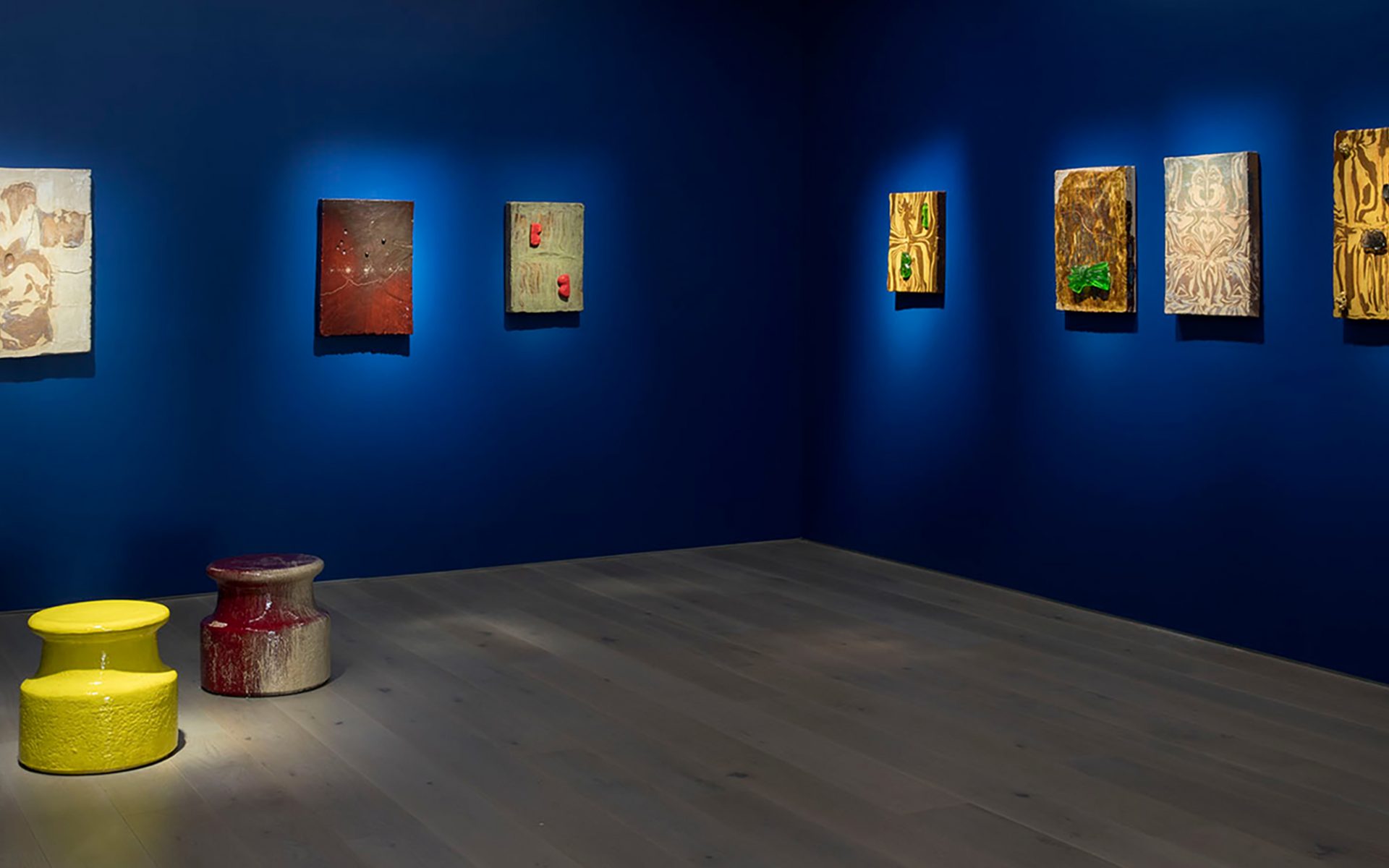

How Artist Johan Creten Is Breaking All the Rules of Ceramics, and Getting Away With It
The artist, who has a show at Perrotin, is known for exploring the limits of the medium
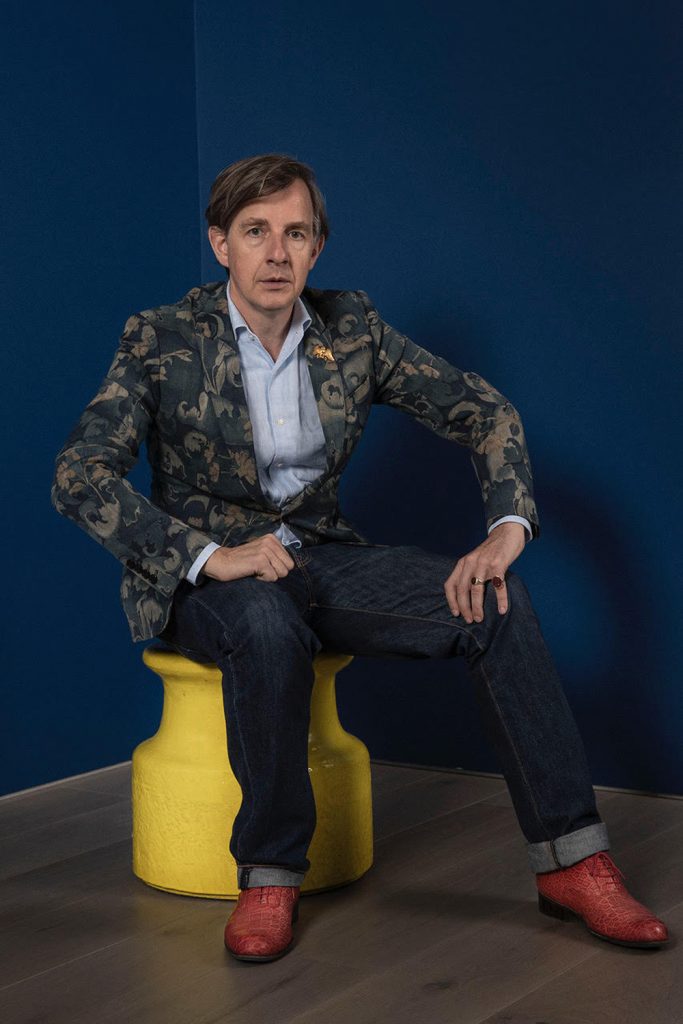
Known as the “Clay Gypsy” for having built a career at artist residencies and ceramic workshops around the world, Johan Creten returns to Perrotin with the fruits of one such stint: a show of seductive ceramic works created in 2013 during his time at the New York State College of Ceramics in Alfred, New York. Aptly called the “Alfred Paintings,” the exhibit showcases these fascinating experimental works, which highlight features like cracks, bubbles, and warped surfaces, and break all of the traditional rules for making ceramics. And this is precisely what the Belgian-born, Paris-based artist set out to do.
Rhythmically displayed on walls painted dark royal blue, Creten’s 21 ceramic canvases explore a variety of ways of working with marbled clay—a style the artist first explored while in residence at the Villa Medici in Rome in the late 1990s. Inspired by the beauty of the marble—both real and illusionistically painted—that he observed in the Eternal City’s churches and palaces, Creten made a 1997 still-life arrangement of marbled urns, embellished with snakes and fruits titled The Garden, in reference to the Biblical notion of paradise.
Recommended: 9 Shows by Women Artists That Are Dominating the Fall Season
Coming to Alfred with a plan to revisit this magical method of mixing different colors of clay, Creten labored in a mentally liberating state of fatigue—due to the proximity to his living quarters of a noisy frat house—to make a novel group of hybrid pieces that toy with the eroticism of his earlier works and whimsically employ visual and verbal puns. Trained as a painter, Creten, who turned to ceramics while still in school, uses glazes sparingly yet with impact—preferring to let the marbled clay and added 3-D elements command the composition.
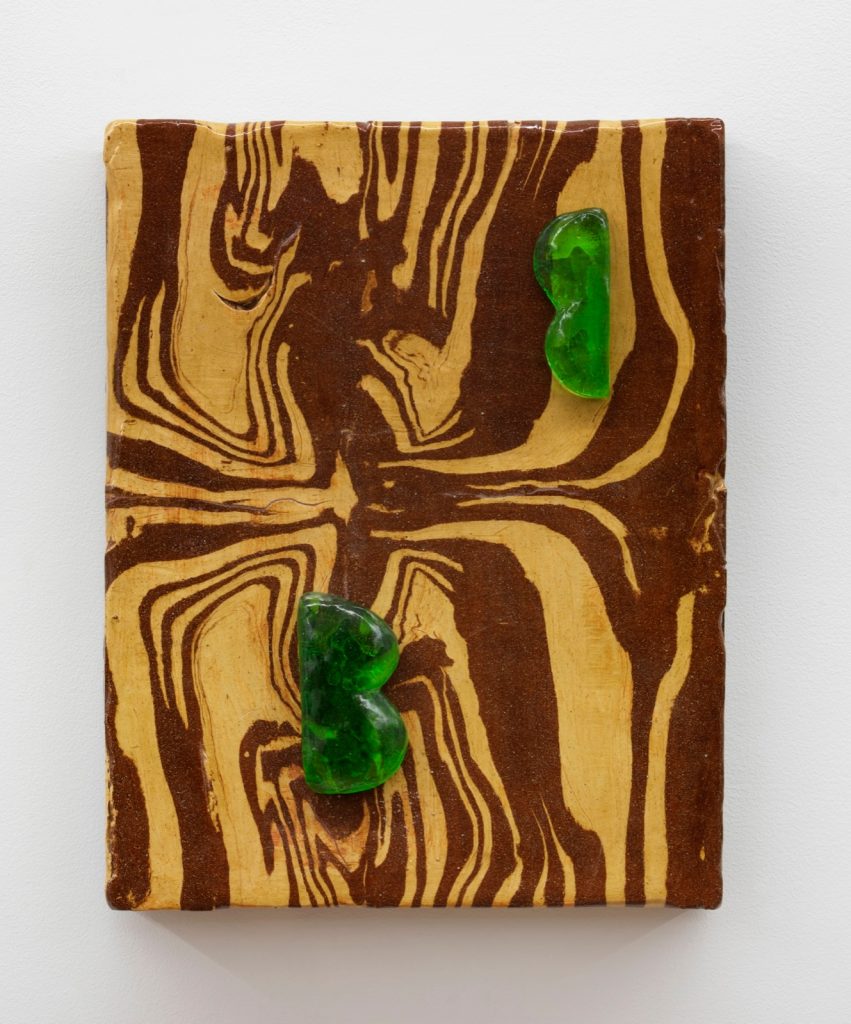
At the entrance to the exhibition is a photomural depicting a bonfire at Alfred (fire is the alchemical element that transforms clay into art) overlaid with a poetic text from the catalogue essay by Colin Lemoine, head of the sculpture department at the Musée Bourdelle in Paris. A gathering of Creten’s sculpted clay stools allows visitors to sit while reading, with more of the colorful observation points (as he calls them) placed throughout the exhibition as stations for contemplation. Two of the artist’s ceramic paintings—the last to be completed at Alfred and a more recent one—face off directly outside the central section of the show.
Lust Limbo is the final work that Creten created at Alfred. The painting offers an oversize interpretation of Marcel Duchamp’s erotic Female Fig Leaf sculpture in glorious gold luster set against an earthy glazed ground. The fig leaf motif makes another appearance in Black Slits, the 11th Alfred painting, as three black fig leaves float on an expressively marbled ground dotted with bits of crumbled white clay in the corners.
Recommended: Take a Look Inside Lehmann Maupin’s New Peter Marino–Designed Gallery
One of Duchamp’s best-known works, The Bride Stripped Bare by Her Bachelors, Even (The Large Glass), is also a reference point for Creten, who embraces cracking, a technique that is largely forbidden in ceramics. The fissures here add metaphoric meaning and value to the works, like the way unintended breakage did for The Large Glass.
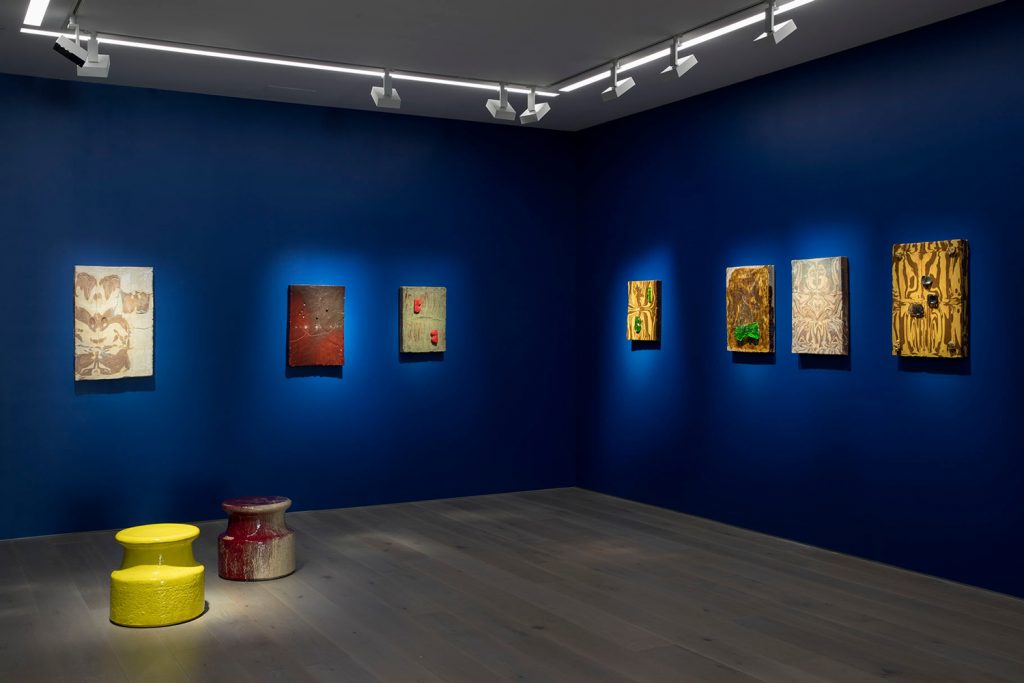
In Landscape, the crack becomes the dividing point between the glossy, machine-polished upper-left corner and the central composition, which features marbling that resembles a pelvic bone or fiery flames. In Two Red Lovers, the cracks become boundaries for the red B-shaped clay forms drifting above the melancholic green ground. The B-shaped components (with B possibly implying bachelor) are repeated in the works Tang, Two Green Lovers, Leopard, and Yellow. But in these instances, rather than clay, the forms are composed of colored glass.
In Two Black Lovers and Three Cherries, rather than letters, the work features red glass cherries and black stoneware balls suggestive of an erotic encounter while Painting for T, a dark, sad self-portrait, is the only directly figurative work in the show.
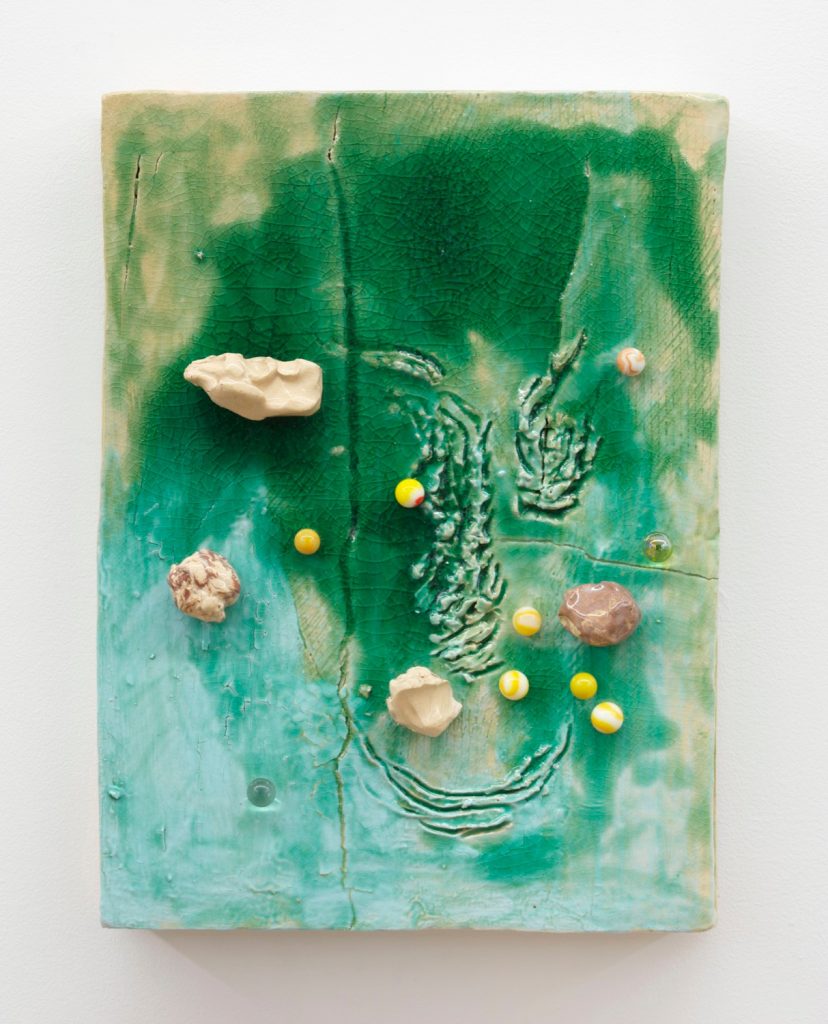
Other works play with the Duchampian notion of punning. With Marbles, Green Marbles and Yellow Marbles, Creten adds readymade and cast-glass marbles to the marbled clay surfaces. With Bundles of Sticks (Faggots) and Green Faggots, he adds sculptural glass and clay sticks toying with the definition of the word faggot, which can mean a male homosexual or, in the alternate, a bundle of sticks or twigs bound together as fuel.
For the past 30 years, Creten has been a pioneer in the effort to make ceramics a vital medium for contemporary art. With the “Alfred Paintings,” we understand why his efforts have been so significant.
“Alfred Paintings” is on view through October 8 at Perrotin, 130 Orchard Street.






